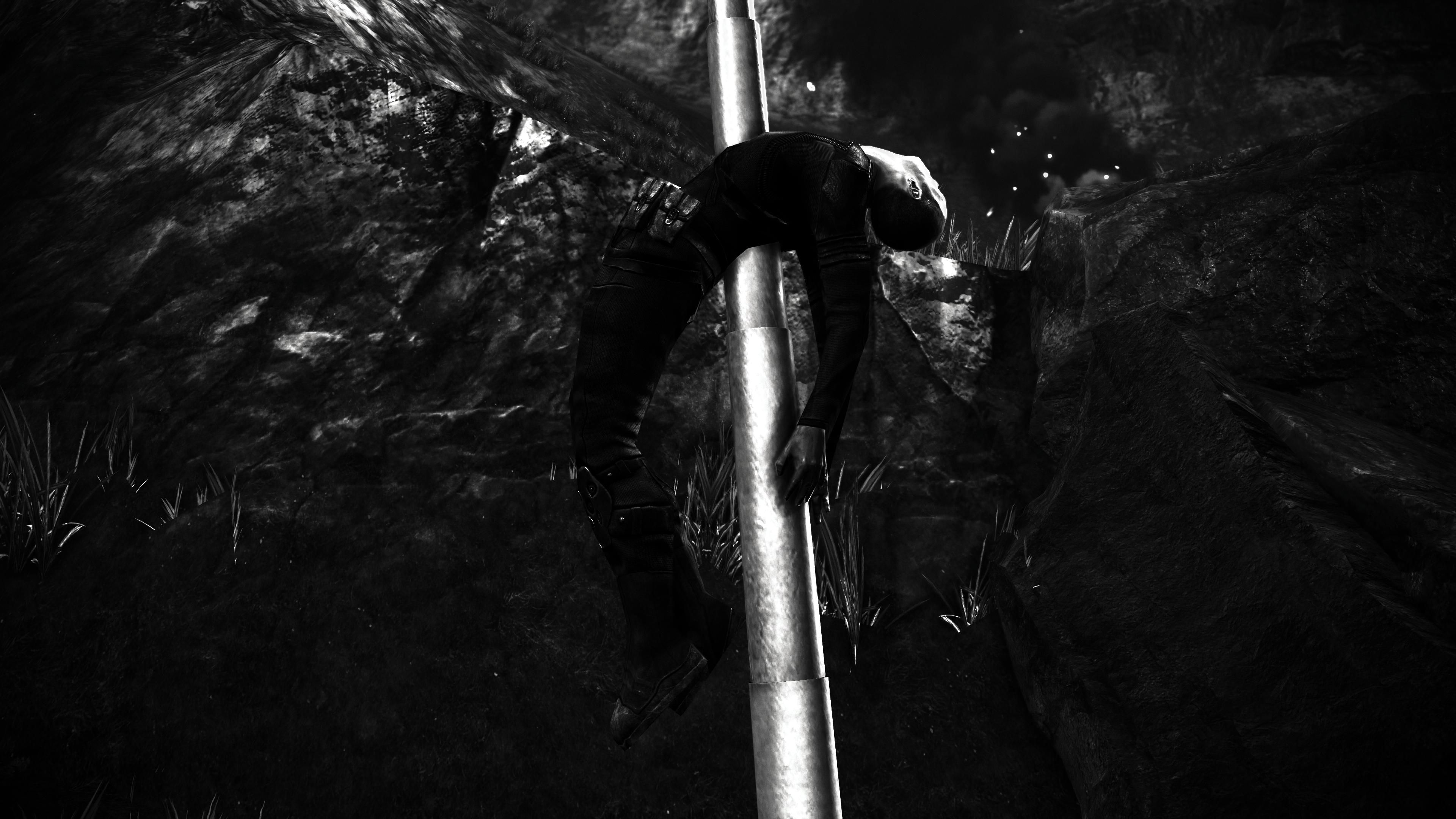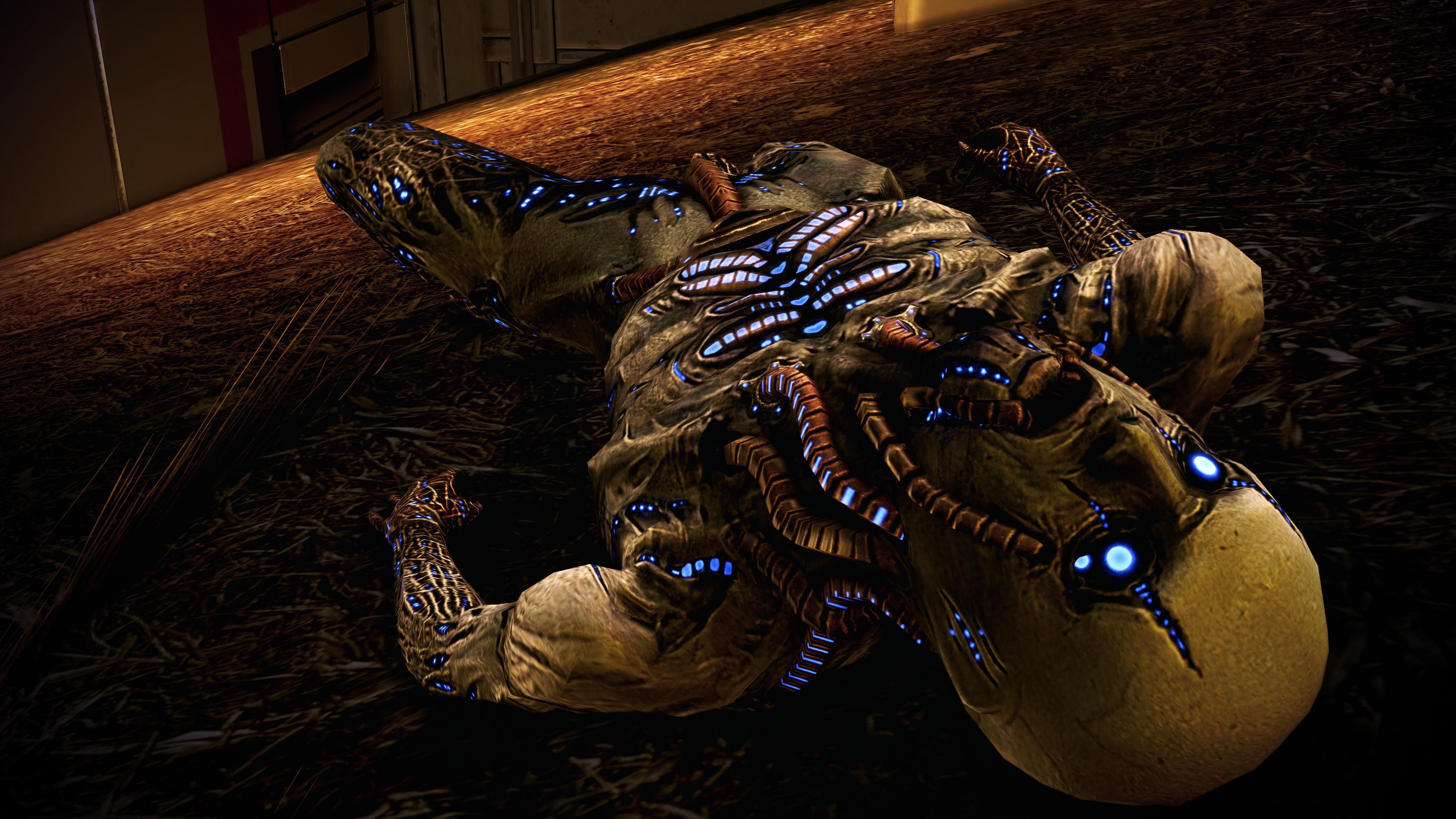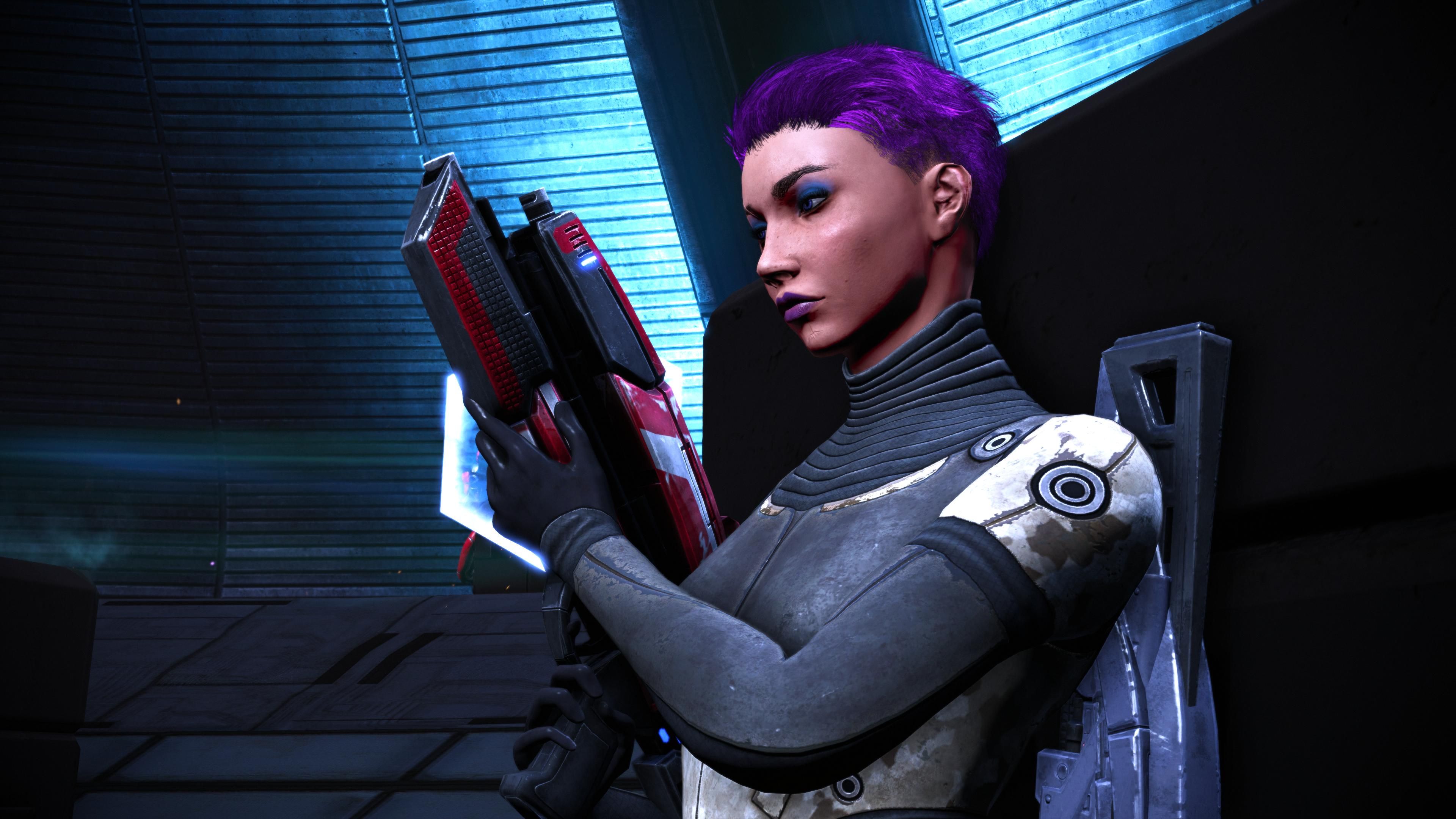Zombies are pretty goddamn scary. They’re a quintessential horror villain, one of the most frightening and most intimate forces of evil in the hallowed genre. Ghosts might haunt you, murderers might stalk you, terrifying sea monsters might pull you down in the deep, but zombies? They are you, and there’s nothing quite so horrifying as that.
I really don’t want to rehash the whole ‘are they really zombies’ thing here. I had enough of that with The Last of Us, and I don’t care what Druckmann says, the stalkers are zombies. If they walk like a zombie and quack like a zombie – or shuffle and rip the flesh off your neck – then they’re a zombie. The Husks though are a very special type of zombie, and while actual horror games conjure up all sorts of creatures and jump scares and foreboding locations, there’s something especially terrifying about the Husks in Mass Effect.
Zombies can feel a little played out these days. The reason Jaws is such a legendary movie is because we never see the shark until it’s too late. Around a decade ago, it felt like every other idea in horror was zombies. We were seeing too much of them, and that made it harder to actually make them scary. Even The Walking Dead, the property that was responsible for popularising zombies over all else, ran out of gas. In the first series, the walkers were a constant threat, but the humans evolved to deal with them, while the zombies – as is their nature – remained hollow and brainless. The show left a fear of zombies behind, and nothing was able to replace it.
It’s not just The Walking Dead though – horror is too concerned these days with showing you the threat, with creating iconic monsters, and struggles to trust its audience to think for themselves. Zombies must appear on the screen at all times, rotting and dripping with blood – how else would we know they’re scary, right? The Husks, while they do run towards you and are designed to look scary, eschew these traditions.
The Husks remind me most of Night of the Living Dead, George A. Romero’s 1968 horror film. Night is often – and incorrectly – labelled the first zombie movie, and it’s in this grey area that the connection to the Husks arises. Zombie movies had existed since the 1930s, and at that stage, ‘zombie’ very specifically meant the Haitain voodoo zombies. The film never uses the word, and Romero has said he did not use zombies as inspiration. This is distinct from Druckmann et al arguing that stalkers aren’t zombies – with The Last of Us, there’s an air of snobbery, of desperation for the creative differences between one set of mindless shambling flesh eaters and another set of mindless shambling flesh eaters. Romero’s is more genuine – zombies as a concept did not exist in the sense that they do now when Night was written, so how could it be the first zombie movie?
Romero’s zombies both are and aren’t zombies. They’re Schrodinger’s Zombie, except they’re definitely dead. The fear in Night of the Living Dead comes almost entirely from the fact that these creatures exist, and nobody knows why. For a long time, the Husks are the same. In a lot of zombie movies, said creatures become part of real life very quickly, and it’s about humans surviving in this new, twisted world. It dilutes the fear that they are human beings, not monsters.
There’s a line in Us where the protagonist asks her fearsome doppelganger who she is. “We’re Americans…” the villain replies in a cracked voice. Us, like Night of the Living Dead, like Husks, understands that zombies are at their best when they’re holding up a mirror.
Husks are the best example of that in gaming. The humans are transformed into pseudo-synthetic versions of themselves, with the core of their humanity hollowed out, leaving them just a… well, a husk. In the third game in the trilogy, other races get pulled into the Husks, giving us twisted and grotesque Banshee versions of the asari that grab at your face with their bony limbs and screech in your face. Saren, the geth, the Illusive Man, even the Reapers are just villains. They’re just bad guys for you to try and stop. They aren’t Husks. They aren’t you.
During gameplay, the Husks are little more than fodder. They’re weak enemies that swarm at you and only do damage in numbers – for the most part, they’re present to force you to act quickly and to be an irritant in the face of the much more impressive bad guys. It’s easy to overlook them if your just playing Mass Effect for the guns.
But Mass Effect has always excelled as a narrative experience ahead of anything else, and it’s through this lens that the Husks emerge as the most interesting and most terrifying creatures in the whole series. They’re humans with the human scooped out and machinery crammed in. In a world where synthetics are on the rise and the definitions of ‘alive’ or ‘sentient’ or ‘soul’ are evershifting, a human without any human left is a much scarier thought than just a dead thing with decaying flesh stumbling onwards muttering about brains.
We probably wouldn’t include Husks, or Us, or even Night of the Living Dead in the mix with typical zombie stories – but maybe that’s the problem. Typical zombie stories are way too interested in making the zombies the stars, or relegating them to the background. In Mass Effect, BioWare manages to strike a balance through the Husks, and that makes them uniquely horrifying amongst video game monsters.
Source: Read Full Article


